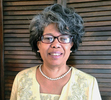Robin R. Foster's Blog, page 7
April 12, 2023
How Do You Use FamilySearch.org?

If you are interested in discovering your family history, FamilySearch.org is a great place to start. FamilySearch.org is a free website that lets you search for records, create a family tree, and connect with other family historians. In this blog post, I will show you how to use some of the features of FamilySearch.org and give you some tips to make your research easier and more fun.
"Create a Free Account" or "Sign in"
First, you need to create a free account on FamilySearch.org. This will allow you to access more records and save your family tree online. To create an account, go to the homepage and click on "Sign In" at the top right corner. Then click on "Create a Free Account" and follow the instructions. You will need to provide your name, email address, and a password. You will also need to agree to the terms of use and privacy policy.
Family Tree
Once you have an account, you can start building your family tree. FamilySearch.org will guide you through the process of adding yourself and your parents. You can also add more relatives by clicking on the green plus signs on the tree. You can enter their names, dates, places, and other information. You can also attach sources, such as birth certificates, census records, or photos, to support your information.
Automatically Search for Records
One of the best features of FamilySearch.org is that it will automatically search for records that match your ancestors. You will see blue icons on the tree that indicate possible matches. You can click on them to review the records and compare them with your information. If they match, you can attach them to your tree and add more details to your ancestors.
Find Relatives
Another great feature of FamilySearch.org is that it will help you find other users who are related to you or who are researching the same ancestors. You can see how you are related to someone by clicking on their name on the tree and then clicking on "View My Relationship". You can also see their contact information and send them a message if you want to collaborate or share information.
Give It a Try
FamilySearch.org is a wonderful resource for anyone who wants to learn more about their family history. It is easy to use and has millions of records and users. I hope this blog post has inspired you to give it a try and discover your roots. Happy searching!
April 6, 2023
Saving Sources from Ancestry.com on FamilySearch.org Can Be Beneficial

I found this at Ancestry.com while using the feature at FamilySearch.org. This is George Epps Tucker's (1859-1927) will in Richland County, South Carolina.

Next, I will save the URL on George Epps Tucker's (1859-1927) sources on FamilySearch.org. This is what it looks like:

If you would like to learn how I did this, here is an example: The Most Important Feature in FamilySearch is the Sources.
Saving sources from Ancestry.com on FamilySearch.org can be beneficial for several reasons:
Centralized Record Keeping: By saving your sources on FamilySearch.org, you have all your genealogical information in one place. This makes it easier to access and manage your records. Collaboration: FamilySearch.org is a collaborative platform, which means that other researchers can access and view the sources you've saved. This can be helpful if you're working with other genealogists or if you're trying to connect with distant relatives. Free Access: FamilySearch.org is free to use, while Ancestry.com requires a paid subscription to access most of its records. By saving sources on FamilySearch.org, you ensure that your research is accessible to anyone who wants to view it, regardless of whether they have a subscription to Ancestry.com. Preservation: By saving sources on FamilySearch.org, you're contributing to the preservation of historical records. FamilySearch.org is a non-profit organization that works to digitize and preserve historical documents, making them accessible to researchers around the world. Accessibility: FamilySearch.org offers accessibility features such as language translation and audio narration, which can be helpful for non-native speakers or individuals with visual impairments. Record Linking: FamilySearch.org allows you to link records together, which can help you build a more comprehensive family tree. For example, if you find a marriage record on Ancestry.com, you can link it to the corresponding individual's profile on FamilySearch.org. Mobile App: FamilySearch.org has a mobile app that allows you to access your research from anywhere. This can be helpful if you're traveling or don't have access to a computer. Record Hints: FamilySearch.org offers record hints, which can help you discover new information about your ancestors. For example, if you've saved a census record from Ancestry.com on FamilySearch.org, the platform may suggest other records that are related to that individual, such as birth or death records. User-friendly Interface: FamilySearch.org has a user-friendly interface that is easy to navigate and search, making it easier to find and save relevant sources. Record Verification: FamilySearch.org allows users to verify and correct information in records, which can help improve the accuracy of your research. Community Support: FamilySearch.org has an active online community where users can ask questions, share research tips, and connect with other genealogists. This can be helpful if you're stuck on a particular research problem or need help deciphering a difficult record. Personalized Research Recommendations: FamilySearch.org offers personalized research recommendations based on your family tree and research history. This can help you discover new sources and expand your research beyond what you've already found on Ancestry.com.Overall, saving sources from Ancestry.com on FamilySearch.org can help you organize your research, collaborate with others, and contribute to the preservation of historical records.
The author generated this text in part with GPT-3, OpenAI’s large-scale language-generation model. Upon generating draft language, the author reviewed, edited, and revised the language to their own liking and takes ultimate responsibility for the content of this publication.
February 3, 2023
The Most Important Feature in FamilySearch is the Sources

I would not have achieved as much as I have if it were not for FamilySearch and its ability to gather the sources in one place. I mean everywhere from FamilySearch, Ancestry, Google, Newspapers.com, HathiTrust, to anywhere I find a historical record. They are kept in one place.
Clearly, I want everyone to be able to use this feature at FamilySearch. I am sharing an example of my second great grandmother, Martha Sim Talley (1855-1936). She was born enslaved, but she died as free woman. Here is the way I use the sources:
1. Sign in to familysearch.org
2. Go to Family Tree.
3. Select Tree.
4. Click on Martha Sims.
5. Select Martha Sims.

6. Go Person View.

7. Click on FamilySearch. Select 1880 US Census.

8. Select View Record.

9. Look at the original record.

10. Attach to the Family Tree.

11. You must attach the 1870 US Census to the Family Tree.

12. Take a live look: ,Martha Sims (1855–1936) • Person • Family Tree • FamilySearch
Source:

1. Now, let’s go to Ancestry.com

2. Search Records.

3. Click on 1870 US Census.

4. 1870 US Census Index: Save on Ancestry, look over suggested records, look at original record, and save URL to put record on FamilySearch.

5. On FamilySearch, add Source. Click on Add Source.

6. Add New Source.
These are the choice that come up:
Add New Source
Add New Memory Source
Attach for Source Box
7. Create Source.
Fill in: Event Date, Source Title, Source Type (Paste your URL you copied from ,Ancestry.com), Citation, Notes, etc.

8. Click Save.

9. Source. Take a live look.

Now you know how to add sources from FamilySearch and Ancestry.com. I will do more examples using other places where you find historical records.
January 11, 2023
How My Husband, Ellis McClure, Helped Me Return


I will never forget how Ellis helped me with everything that I used to do all myself. Back when I first had the stroke in September 2016, Ellis and Adrianne took care of me. Ellis took me to the temple, and he made sure I had research.
At the time, we were staying in Phenix City, Alabama. It is close to Columbus, Georgia. My doctor had his office there. Columbus Public Library is the place where Ellis took me.

This library is amazing! The wood trimmings, furniture, genealogy, and local history were top notch. This is the Genealogy & Local History site. I did not expect to see all that they had there. As you can see in the photo above, I had found lots of resources.
I had perused several books:


One would think that I was totally void from doing anything after my stroke. Just think about a person's daily activities. Without Ellis, I could do none of them. Looking back at the photo, I had a wheelchair. I did not have glasses. I had use of only my left arm. I had to learn how to write with it.
I am telling you this because someone out there needs to remember this. Stay focused on what you need. Keep the matter in your prayers. I believe He will send it to you.
I know I was in Georgia, but I had Ellis get a book about Tuscaloosa County, Alabama. I do not have the source, but I will find it. This is what I captured from the book:
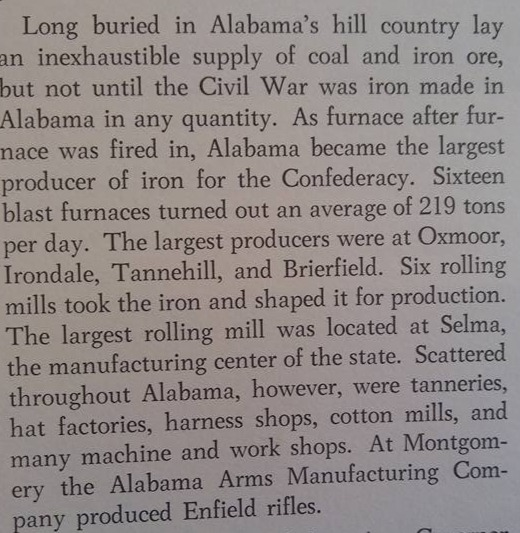
If you follow me, you will notice that I am researching Ellis' side. He had paternal grandparents that worked at Irondale, a coal mine. That is the same coal mine as mentioned above. It started making iron at the start of the Civil War. I need to go back to find more.
Tuscaloosa became county in 1818:

Remember all the iron and coal in Alabama at the start of the Civil War? This is how they transported it:

In closing, I am incredibly grateful to Ellis. I will spend forever letting him know how grateful I am.
December 20, 2022
I Believe Our Ancestors Direct Us Along a Specific Course

These are my great grandparents, George Anderson Tucker (1882-1932) and Daisy B. Chick Tucker (1883-1941).
They are from Buffalo, Union County, South Carolina. I never knew them, but my grandma would tell me whatever I wanted to know.
They had twelve children. All would work on their farm. Daisy would take eggs to sell at the store. I know George liked to hunt. He owned a car. People say that he was Caucasian. His father was Great Great Grandfather George Epps Tucker (1859-1927), and his mother was Great Great Grandmother Martha Sims Talley (D. 1936) an African American.
I got to know them through their children. They had the highest respect for their parents. Let me tell you about a vision I had when we were moving to Hopkins, South Carolina. It was at night while we were driving on the road, I was in the passenger seat. The moon was bright. All of a sudden, I saw my Great Grandfather George right next to me outside the car window. He was on a horse, and they were galloping fast.
He was there in full color. I did not say anything, but I knew I was going to the right place. I look back on that now. He was excited! Our ancestors direct us along a specific course.
November 1, 2022
"Our Fathers' Fields" is Meant to Recount the Southern Story, but It Reveals Formerly Enslaved

I have written about Our Father's Fields: A Southern Story more than twice. Some might ask, "Why do you need to tell this story again?" This is what I learned: I bought the book back before 2012. This is the second book. I repurchased the book because a cousin has the first book. I found the Chick's who owned Liza (read page 229), my third great grandmother.
This book recounts the former plantations and former enslavers with some former enslaved. It mentions churches where they both attended back before 1865.
The Author, James Everett Kibler, purchased a dilapidated plantation in Union County, South Carolina in 1989. He does an excellent job of talking about the life of the different families from the area.
This time I need to talk about Tuckertown. This is where George Epps Tucker (1859-1927) is buried. Again, some people might ask, "Why do you need to tell this story again?" Well, I was on Twitter this morning, and I follow @SayTheirNamesIr. Martine Brennan M. A. has a website called ENSLAVEMENT-TO-CITIZENSHIP.
Comer and Tucker
She has a post called "Irish-Overseers in South Carolina 1850." She has this entry listed for Union County, South Carolina: Comer or Connor, Jesse c1822 in the household of C S Sims (Farmer) 1850
Jesse Comer is the last name of a cousin who was the informant on George Epps Tucker's death certificate:

"South Carolina Deaths, 1915-1965," database with images, FamilySearch (https://familysearch.org/ark:/61903/3... : 12 March 2022), 004177631 > image 1458 of 1714; Department of Archives and History, State Records Center, Columbia.
In the book I cited, a section on page 252 is called "Comer (Tucker) House and Vicinity" which was built around 1830 "from trees sawn on the place" as the seat of a large plantation. The Comer's owned the house, but because Kibler referred "to Tucker's in the title, I am looking to find some relationship between Tucker's and Comer's.
On the next page, a paragraph starts: "A note on Santuc and Fish Dam (Carlisle) is in order here. Four large Great Houses still stand there: the Tucker house (1859)." I believe one of the houses Kibler is describing belongs to the Tucker family. I need to get an old map from the public library which has the names of families from the area to decipher what Kibler reveals.
Same Surnames
I do not know if my readers realize this, but some of the last names of the people in this book are Chick, Eppes, Ashford, Hunter, Jeter, Lyles, Maybin, McCracken, Renwick, Sims, Tucker, and Whitney. These are the names that are carried by my family. For example, my third great grandfather, Henry Sims was somehow affiliated with Sims Plantation. George Ashford was a grandfather to George Epps Tucker. Eliza Maybin had some connection to the Maybin's. My grandmother, Mrs. Otis E. Tucker-Vance said the Whitney's were cousins. Her uncle's wife's name was Janie Hunter Chick, and Janie's ancestors had been enslaved by the McCracken's.
Lastly, I suppose I will share with you the fact that George had another death certificate:

"South Carolina Deaths, 1915-1965," database with images, FamilySearch (https://familysearch.org/ark:/61903/3... : 12 March 2022), 004177631 > image 1475 of 1714; Department of Archives and History, State Records Center, Columbia.
This informant on this death certificate is George Cofield. It was not as important to me as the other death certificate that I posted above because I finally realized the Cofield family has been recorded in the book. I can learn whether he was African American of not. There is so much in this book. I just need to decide who to research.
Thanks so much to Martine for mentioning Jesse Comer. I have no idea if this is the same person or not, but I do know George was related to a Jesse Comer.
"Our Father' Fields" is Meant to Recount the Southern Story, but Reveals Formerly Enslaved

I have written about Our Father's Fields: A Southern Story more than twice. Some might ask, "Why do you need to tell this story again?" This is what I learned: I bought the book back before 2012. This is the second book. I repurchased the book because a cousin has the first book. I found the Chick's who owned Liza (read page 229), my third great grandmother.
This book recounts the former plantations and former enslavers with some former enslaved. It mentions churches where they both attended back before 1865.
The Author, James Everett Kibler, purchased a dilapidated plantation in Union County, South Carolina in 1989. He does an excellent job of talking about the life of the different families from the area.
This time I need to talk about Tuckertown. This is where George Epps Tucker (1859-1927) is buried. Again, some people might ask, "Why do you need to tell this story again?" Well, I was on Twitter this morning, and I follow @SayTheirNamesIr. Martine Brennan M. A. has a website called ENSLAVEMENT-TO-CITIZENSHIP.
Comer and Tucker
She has a post called "Irish-Overseers in South Carolina 1850." She has this entry listed for Union County, South Carolina: Comer or Connor, Jesse c1822 in the household of C S Sims (Farmer) 1850
Jesse Comer is the last name of a cousin who was the informant on George Epps Tucker's death certificate:

"South Carolina Deaths, 1915-1965," database with images, FamilySearch (https://familysearch.org/ark:/61903/3... : 12 March 2022), 004177631 > image 1458 of 1714; Department of Archives and History, State Records Center, Columbia.
In the book I cited, a section on page 252 is called "Comer (Tucker) House and Vicinity" which was built around 1830 "from trees sawn on the place" as the seat of a large plantation. The Comer's owned the house, but because Kibler referred "to Tucker's in the title, I am looking to find some relationship between Tucker's and Comer's.
On the next page, a paragraph starts: "A note on Santuc and Fish Dam (Carlisle) is in order here. Four large Great Houses still stand there: the Tucker house (1859)." I believe one of the houses Kibler is describing belongs to the Tucker family. I need to get an old map from the public library which has the names of families from the area to decipher what Kibler reveals.
Same Surnames
I do not know if my readers realize this, but some of the last names of the people in this book are Chick, Eppes, Ashford, Hunter, Jeter, Lyles, Maybin, McCracken, Renwick, Sims, Tucker, and Whitney. These are the names that are carried by my family. For example, my third great grandfather, Henry Sims was somehow affiliated with Sims Plantation. George Ashford was a grandfather to George Epps Tucker. Eliza Maybin had some connection to the Maybin's. My grandmother, Mrs. Otis E. Tucker-Vance said the Whitney's were cousins. Her uncle's wife's name was Janie Hunter Chick, and Janie's ancestors had been enslaved by the McCracken's.
Lastly, I suppose I will share with you the fact that George had another death certificate:

"South Carolina Deaths, 1915-1965," database with images, FamilySearch (https://familysearch.org/ark:/61903/3... : 12 March 2022), 004177631 > image 1475 of 1714; Department of Archives and History, State Records Center, Columbia.
This informant on this death certificate is George Cofield. It was not as important to me as the other death certificate that I posted above because I finally realized the Cofield family has been recorded in the book. I can learn whether he was African American of not. There is so much in this book. I just need to decide who to research.
Thanks so much to Martine for mentioning Jesse Comer. I have no idea if this is the same person or not, but I do know George was related to a Jesse Comer.
September 26, 2022
We Uncovered the Grave Site for Andrew J. Poole (1850-1936) and Caroline Poole (1814-1916)
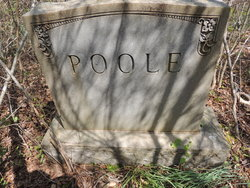
Have you ever started at an uncovered grave marker? Well, that's what the community did right here in Fairview Cemetery in Greenwood, South Carolina. They had never heard of Poole. After they stumbled on this grave marker, they happened to find a few stones. A. J. P. (1850-1936) and C. P. (1814-1916) were the first to catch their eyes.


Who are C. P. (1814-1916) and A. J. P. (1850-1936)?
There were other gravestones, but Robin and her friend from Genealogy Just Ask got work on C. P. (1814-1916). It was the oldest from this group and possibly a patriarch or matriarch and the gravestones part of a family. Jan looked among the death certificates and found what she was looking for:

Born in 1814, Caroline Poole was the name of the person buried in Fairview Cemetery. Her father was Edmund Poole, and her mother was Lucy Reynolds. All of them were born in the part of Abbeville County that became Greenwood County, South Carolina. When you look for them remember to look for both Poole and Pool.
A. J. P. (1850-1936) was Caroline Poole's son:
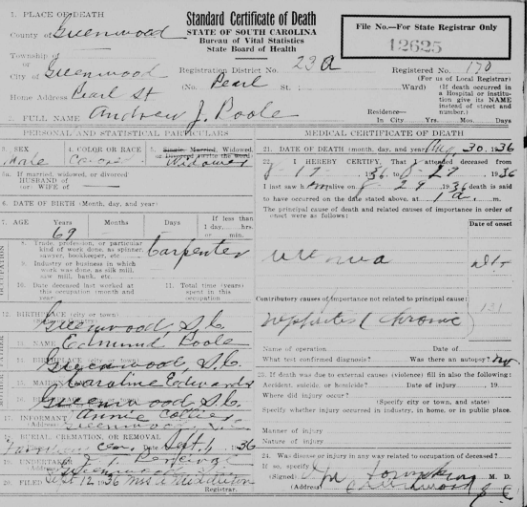 image 354 of 1703; citing Department of Archives and History, State Records Center, Columbia." alt=""South Carolina Deaths, 1915-1943," index and images, FamilySearch (https://familysearch.org/pal:/MM9.3.1... : accessed 15 Jul 2014), 004179134 > image 354 of 1703; citing Department of Archives and History, State Records Center, Columbia.">
image 354 of 1703; citing Department of Archives and History, State Records Center, Columbia." alt=""South Carolina Deaths, 1915-1943," index and images, FamilySearch (https://familysearch.org/pal:/MM9.3.1... : accessed 15 Jul 2014), 004179134 > image 354 of 1703; citing Department of Archives and History, State Records Center, Columbia.">His name was Andrew J. Poole, and his parents were Edmund Poole and Caroline Edwards Poole. He was buried with his mother. We still need to find Edmund or Edmond Poole.
Who is Andrew J. Poole?
I just could not leave it there. It always pays to follow your nose. I was excited because Andrew shared what Beverly Vance (1832-1899) went through. I have not found Beverly yet, but I am overjoyed to find this testimony given by Andrew. I just wonder if they somehow knew each other. Here is Andrew's testimony:

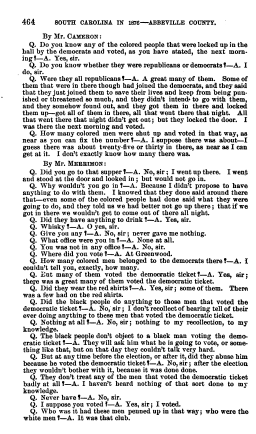
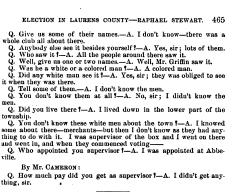
Andrew J. Poole testimony before U.S. Senate. https://books.google.com/books/conten...
September 20, 2022
When I Interviewed My Uncle Buddy (Robert Foster 1919-1990)
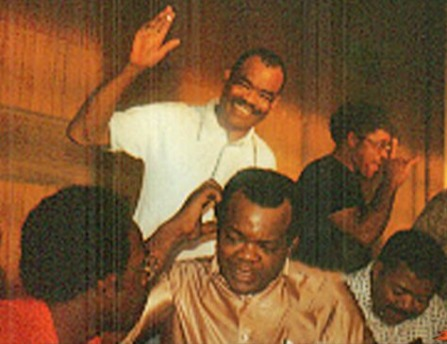
The gentleman standing in the photo is my Uncle Buddy. He was Robert Foster (1919-1990). I interviewed him in the late '80's.
He told me some key details about Ora's family. Ora was his mother. I remembered her visiting us when we lived in Detroit, Michigan and in Joliet, Illinois. I was no more than five years old when she passed away.
Here are the details that I received from Uncle Buddy's interview:
-Ora came from Desoto County, Mississippi
-Her parents had been enslaved.
-They came from North Carolina with enslavers during enslavement.
-The enslaved died in the US Civil War.
-
-The enslaver's brother took possession of Lucy.
-This brother already owned Hence.
-Hence and Lucy were married, and they both were Nelms.
Listen to my podcast as I explain where all these details led.
September 18, 2022
"Moore Street: Growing Up in the Era of Jim Crow," Authored by Donald Waddell LaHuffman
By Robin R. Foster

Saturday, we went to the ,Local Authors' Showcase, sponsored by the Friends of the ,Cumberland County Public Library. We will be spotlighting some of the authors that were displaying their books.
I was impressed by one of the attendees who reminded me of my great uncle, ,Dr. Clarence Chick. I have been researching him, and I found he had taught at Fayetteville State University when it was Fayetteville Teacher's College.
I took a wild guess and he happened to have known of him. That is a rare thing for me. I was excited to learn of Mr. Donald Waddell LaHuffman, a retired teacher is the author of "Moore Street: Growing Up in the Era of Jim Crow."
Those of you who follow me and are in ,Jim Crow Genealogy! Just Ask!, you know of the work I do to document Jim Crow Era descendants in genealogy. Well, I am very elated to introduce Mr. LaHuffman to you.
His book is on ,Amazon, and I will be getting and reading it as well. In the synopsis on Amazon, it says the book "is a compelling firsthand account of the author's boyhood years growing up in Fayetteville, North Carolina during the era of racial segregation, circa 1942-1960."
My great uncle, Clarence, would have had similar experiences. I am eager to learn more about the impact of Jim Crow on Fayetteville, North Carolinians. I know the struggles that his cousin, my grandmother, faced in South Carolina.
It will be interesting to compare Mr. LaHuffman's experiences with my grandparents' experience in Columbia, South Carolina. Uncle Clarence had often requested that my mother come to school here at Fayetteville.
This is the first in a series of spotlights.

